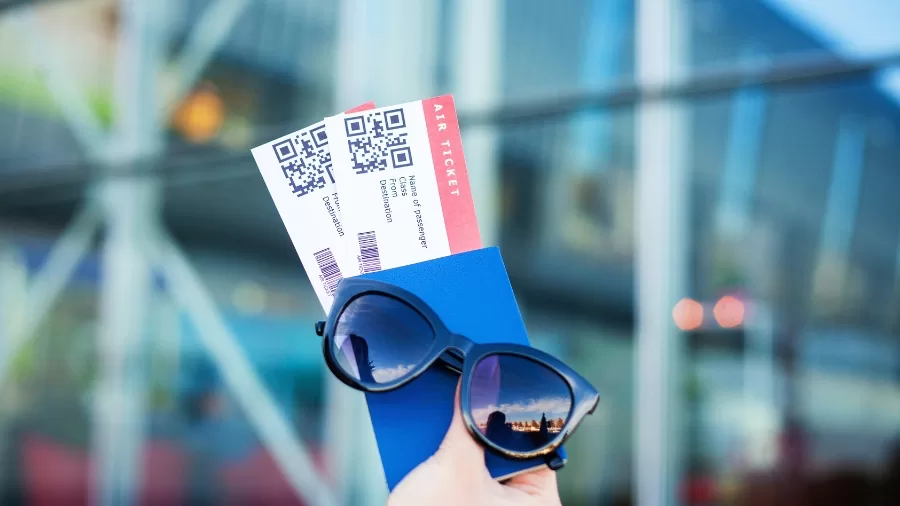Travel
Are Airline Loyalty Programs Still Worth It? Why Passengers Are Breaking Up with Rewards

- Airline loyalty programs are becoming less appealing as frequent fliers grapple with diminishing rewards, increasing costs, and complicated restrictions.
- Frustrated by limited benefits and a lack of transparency, many travellers are stepping away from these programs.
- To retain loyal customers, airlines must redesign their loyalty offerings to deliver meaningful value and elevate the overall customer experience.
Loyalty programs, once a key benefit for frequent fliers offering miles, upgrades, and exclusive perks, have long been a staple of the airline industry. However, recent policy shifts have left passengers feeling frustrated, leading to a surge in dissatisfaction. Here’s an in-depth look at why more travellers are turning away from frequent flyer programs and the challenges airlines now face in retaining their loyal customers.
A Shift in the Rules
Airlines have been altering the structure of their loyalty programs, often in ways that benefit the airline more than the customer. What was once a straightforward system of earning miles based on distance flown has now become a more complicated points system, with lower-cost flights often excluded from earning miles. This change has left many passengers, particularly long-time loyal ones, feeling frustrated and alienated, as their efforts to accumulate miles seem to be less rewarding.
This shift stems from airlines’ increasing need to generate more revenue per passenger, a trend driven by rising operational costs. In their pursuit of higher profits, airlines are focusing more on premium-class sales while scaling back perks for regular travellers. For frequent fliers, this shift can feel like a betrayal, as their loyalty no longer yields the same benefits it once did.
Hidden Costs and Decreased Transparency
A major concern with airline loyalty programs is the growing lack of transparency about the actual cost of rewards. As reported by NBC News, frequent flyer programs now require travellers to redeem significantly more points or miles for rewards than in the past. Additionally, taxes and fees often make “free” flights far more expensive than they first appear, severely diminishing the value of loyalty rewards.
The introduction of blackout dates and limited reward availability further compounds the problem. As airlines prioritize high-paying customers, long-time loyal fliers may find themselves unable to use their rewards when they need them. This leaves them with the tough choice of either paying more for a flight or forfeiting their hard-earned points.
Why Loyalty Programs Are Still Popular—For Now
Despite their downsides, loyalty programs aren’t disappearing anytime soon. As Money Talks News highlights, there are still valuable perks for frequent flyers who know how to maximize their benefits. Many programs continue to offer practical rewards like priority boarding, free checked luggage, and access to airport lounges—especially helpful for business travellers or anyone willing to put in the effort to earn points.
Moreover, some airlines still roll out enhanced rewards for their elite members, offering premium incentives for those flying in higher-class seats or during less crowded times. For those who remain loyal, these rewards can still make a noticeable difference in their travel experience.
A Growing Trend: Breakups with Loyalty Programs
The rising number of travellers opting out of loyalty programs is impossible to overlook. As reported by Yahoo Finance, many customers are leaving these programs behind, frustrated by increasingly complex restrictions and diminishing rewards. More consumers are realising there are alternative ways to earn travel benefits, such as credit card rewards and cashback offers, which offer more flexibility than traditional airline loyalty programs.
For many, the breaking point comes when the rewards of sticking with a single airline no longer justify the hassle of navigating constant rule changes, confusing redemption processes, and escalating costs. Travellers are beginning to recognise that their loyalty may not be as valuable as they once thought, and they are becoming more open to exploring other options.
The Road Ahead for Airlines
Despite growing frustration with loyalty programs, airlines are unlikely to abandon them anytime soon. To stay relevant, they must adapt to the evolving expectations of travellers. As The Conversation highlights, airlines need to strike a balance between rewarding loyal customers and maintaining profitability. This could involve offering more transparent, flexible loyalty programs with clearer redemption processes and fewer hidden fees.
Moreover, airlines could benefit from investing in customer service and actively gathering feedback from frequent flyers, tailoring programs that offer value to both parties.
While frequent flyer programs may be undergoing substantial changes, airlines must do more to foster long-term loyalty. With increased competition from low-cost carriers and alternative travel options, the era of effortless rewards for airline loyalists may be over, but the demand for better, more thoughtful programs remains strong.
A New Era for Airline Loyalty Programs
The decline in the effectiveness of airline loyalty programs signals a shift in how consumers approach air travel. Once a source of attractive perks, these programs have lost their appeal due to structural changes and a lack of transparency, driving travellers to reconsider their loyalty. To regain trust, airlines must revamp their loyalty programs, ensuring they deliver genuine value while recognising that customer satisfaction is key to sustained success. For now, frequent travellers are increasingly selective, spreading their loyalty across multiple airlines and rewards programs rather than committing to just one.


















































